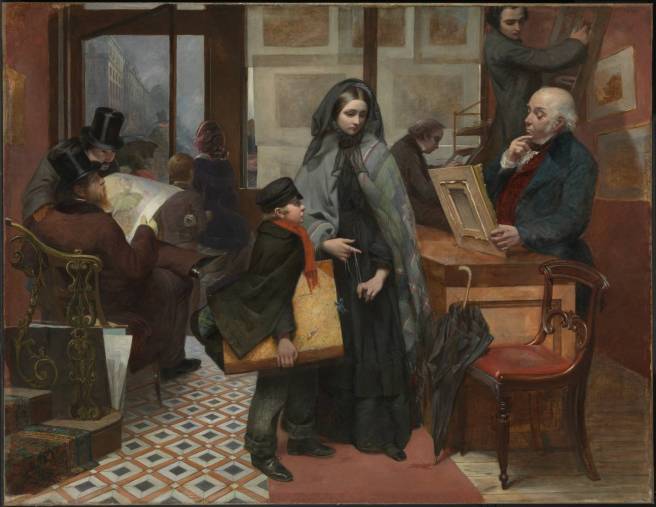
The iconography in this piece stems mostly from the way in which the characters in the scene are dressed, and the actions in which they are taking. The most prominent iconographic element is the woman in the center dressed in all black. She is most likely whom the title of the piece is referring to, as her presence in the piece is distant. Not only does she not make eye contact with anyone in the piece, but she interacts with no one in the piece at all. The fact that she is wearing all black tells the viewer that she is a widow. In her hands is a cord, which most likely is attached to a pocket watch. The fact that she is a widow makes the pocket watch iconograhically important, as the viewer will assume that it belonged to the husband who had died. This leads to the general iconography of the setting itself. The piece takes place in a pawnshop, which is apparent as the man who is behind the desk is appraising a work of art presented to him. The men on the left are looking over pieces of art that have been brought. The boy is holding a portfolio, meaning that the mother and the boy are intending to sell the art to survive. The boy is iconographically important to the piece as well, as it shows the reader that the woman is a mother and that she is selling these things as a last resort to gain money for her family and for her child. Her plight is reflected through the iconographic parallel symbolism of the mother and boy leaving the front door of the shop as well. Finally, the last iconographic symbol in the piece is the black umbrella. The woman is in mourning and is wearing all black, but the inclusion of the black umbrella adds more misery symbolically to the piece, showing how bad her luck is and that her fortune is not great if the weather is not kind to her.